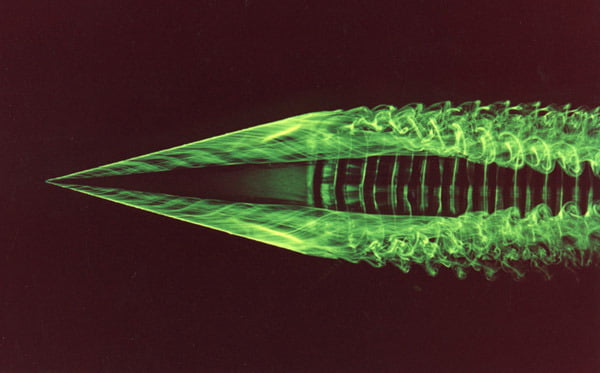Some 20,000 years ago, a massive star blew off a ring of dust and gas that expanded into the surrounding interstellar medium. Later, in 1987, the star exploded as supernova 1987A. That explosion lit the surrounding area, revealing a clumpy ring astronomers have struggled to explain. But a new team believes they have a fluid dynamical answer: the Crow instability.
Closer to home, we see the Crow instability when an airplane’s contrails break up. It happens when two vortices that rotate in opposite directions are close to one another. Any wobble in one vortex is enhanced by the influence of its neighbor. Eventually, this breaks the original vortices apart and causes them to reform as a series of smaller vortex rings.

In the case of supernova 1987A, the researchers propose that the star originally blew off two vortex rings that, due to their mutual influence, broke down into a clumpy ring of vortices. (Image credits: NASA/ESA/CSA/M. Matsuura/R. Arendt/C. Fransson and NASA/ESA/A. Angelich + M. Wadas et al.; research credit: M. Wadas et al.; via APS Physics)



